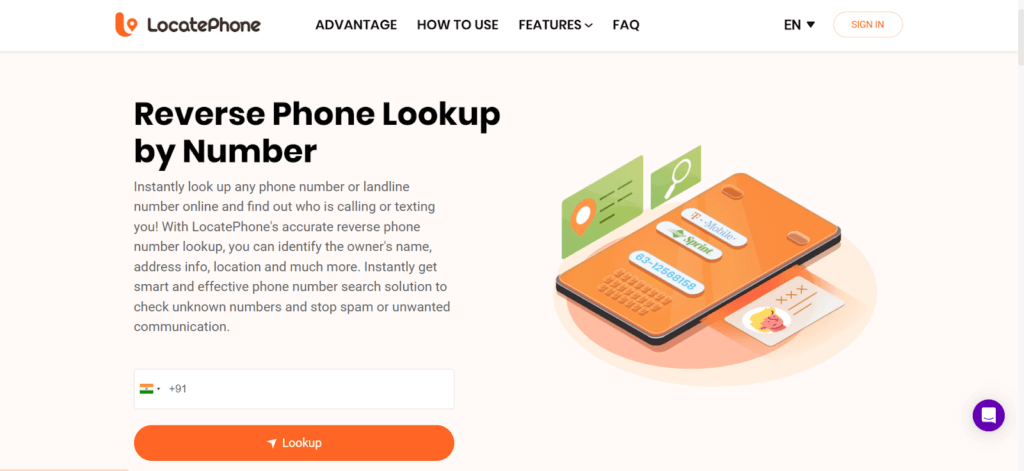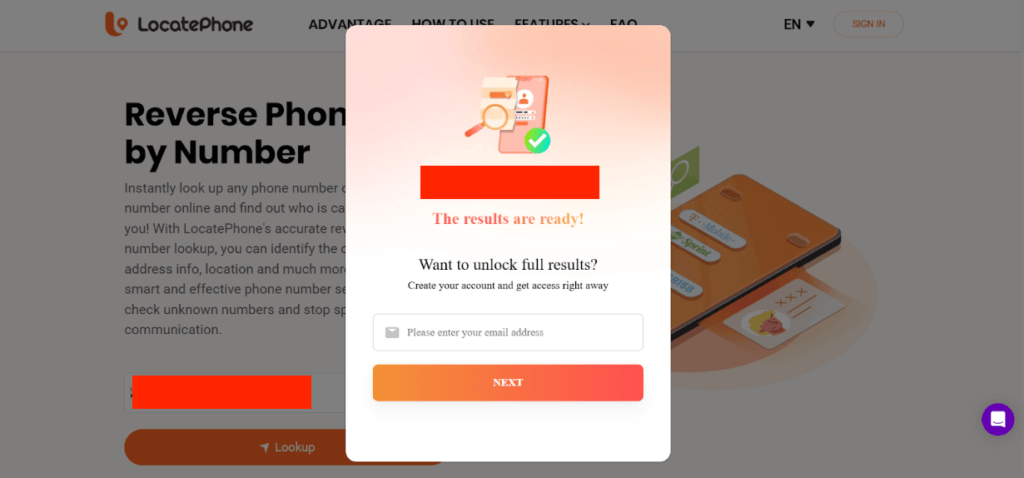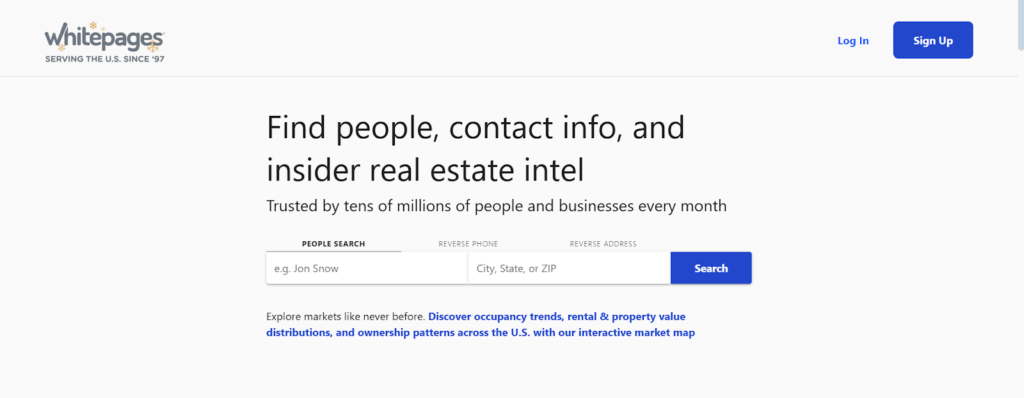It is sometimes difficult to find the owner of a VoIP number since these numbers use the internet rather than traditional phone lines. Businesses, scammers, and personal users are often involved with businesses that seek privacy.
Nevertheless, using the right tools such as reverse phone lookups, CNAM databases, packet analyzers, and provider requests can reveal information that can be helpful attached to most VoIP numbers.
Can a VoIP Number be Traced?
Yes, a VoIP number is traceable, but it depends on the service that the owner uses and how much anonymity he or she has. VoIP is an online system, hence means of tracing typically includes IP finding, provider logs, and databases of caller IDs instead of the conventional records of telecoms.
Although it is often not straightforward to discover the exact identity by an ordinary user, locations, service providers, or associated accounts can be determined by domain information, call records, CNAM records, and reverse lookup output. Subpoenas and network logs are more effective law enforcement tools to trace VoIP owners.
Cómo Find Owner of VoIP Number
Locating the owner of VoIP number needs an amalgamation of digital tools, databases, and investigation techniques. VoIP numbers leave a number of online footprints, including IP-based routing and directory entries, which may be used to indicate the identity of the caller. Below are 13 effective methods to trace a VoIP number.
Use Reverse Phone Lookup
One of the simplest methods to verify the owner of a VoIP number is to use reverse VoIP number lookup websites such as LocatePhone. These databases include a collection of carrier data, associated social account information, IP-registered names, and public records. VoIP numbers can reveal metadata, including the carrier used and area or disposable service. A lookup tool assists in the speedy identification of spam or fraud.
Pasos
- Ir a la sitio web and enter the mobile number.

- Now, provide your email address to receive the details.

- Check ownership details, carrier type, spam status, and any linked profiles.
Enable Caller ID on VoIP Service
Most VoIP platforms include advanced caller ID features that display the caller’s registered name, CNAM information, and sometimes the associated business. Enabling enhanced caller ID improves visibility and helps identify legitimate users from spam callers. It also updates in real time, so every incoming call shows more reliable data.
Pasos
- Open your VoIP settings.
- Go to Caller ID or CNAM section.
- Enable full caller identification and save the changes.
- Test with an incoming call to confirm that additional caller information appears automatically on your device.
Contact the VoIP Service Provider
VoIP providers store account registration details, logs, and caller activity. Although they cannot disclose private information without proper authority, they can verify whether a number is active, suspended, or flagged for misuse. Providers can also escalate complaints and forward information to authorities if fraudulent activity is detected.
Check Online Directories
Whitepages and other online directories maintain caller reports, carrier type, location data, and possible owner names. VoIP numbers often appear in business listings or public records, making these directories useful for quick identity checks. They also flag numbers reported for spam or telemarketing, helping you assess risk levels immediately.
Pasos
- Visit Whitepages and enter the number.
- Review the caller’s location, possible owner details, carrier type, and spam activity.

- Save any matches.
- If details are limited, compare the results with other directory sites for additional verification.
Use a Packet Analyzer
A packet analyzer such as Wireshark can examine VoIP traffic and reveal SIP headers, routing paths, IP sources, and server details. This method is technical but effective for identifying the VoIP provider or region. It’s especially helpful in business networks, where call packets expose deeper metadata about incoming calls.
Trace Using IP Address Lookup
If a VoIP number reveals routing or SIP server domains, WHOIS lookup can identify the hosting provider, registrar, and IP ownership. WHOIS tools uncover valuable information such as organization names, hosting locations, and administrative contacts. This helps trace the underlying provider and narrow down the caller’s identity.
Pasos
- Collect the domain or IP from SIP headers.
- Enter it into a WHOIS lookup tool.

- Review the registrar, organization, and contact details.
- Use this information to identify the provider behind the VoIP number for further review.
CNAM Lookup to Find Owner
CNAM databases contain names of callers registered with the phone carriers, many of which are VoIP services. A CNAM lookup operation will provide business names and personal data or tags such as Scam Likely. This comes in handy when the caller did not block their identity. CNAM is extensively employed by call centers and provides quality identification information.
Analyze VoIP Address Domain
Certain VoIP calls have the SIP-based identifiers. When looking into this domain, the service provider, area, or organization is identified behind the number. Email patterns, email hosting companies, and network paths can be found in one way with domain analysis tools that can give you an idea of who the caller is communicating with.
Pasos
- Copy the SIP or domain address.
- Run it through a domain lookup tool.
- Examine host details, provider information, and associated regions.
- Cross-check the provider with public VoIP databases to identify possible account owners or companies using that domain.
Check Call Logs
VoIP applications or telephone systems store call logs that include metadata, which includes timestamps, type of call, frequency, caller ID pattern, and even routing notes. Going through logs will point out repeating spam patterns or geographical patterns. Certain VoIP systems will also hold extended SIP parameters, which may provide some extra ownership hints to technical end-users.
Pasos
- Open your VoIP application or phone system and access call history.
- Check metadata such as call duration, caller ID details, and frequency.
- Analyze patterns to determine whether the caller is legitimate, spam-related, or linked to specific regions or providers.
Use Automated Service *69
Dialing *69 recalls the preceding number even when the caller holds down immediately. Some VoIP systems can show unhatched numbers or replay caller ID information on the *69 command. It is an easy, quick way that can be used by non-technical users attempting to identify unknown callers who are unknown without external tools.
Pasos
- Dial *69 on your VoIP phone or mobile device.
- Wait for the automated voice to provide the last caller’s number.
- Record the number for further checks using lookup tools or directories.

VoIP Number Search on Google
A VoIP number can list business, scams or social profiles, or forums where the number has been posted. This is a good place to start since search engines frequently catalog publicly available records and user complaints. A substantial portion of VoIP numbers are recycled or reused, and thus Internet traces may continue to be visible for years.
Pasos
- Go to Google.
- Enter the VoIP number on Google in quotes.

- Check results across forums, business listings, complaint boards, and social networks.
- Compare details to identify the number’s purpose or owner.
Use Social Media
VoIP numbers are commonly used to sign up social accounts by numerous users, particularly social platforms such as Facebook, Instagram, or WhatsApp. Using the number to search through social networks can give results that show associated profiles, usernames, business pages, or listings in the marketplace. Social media usually offers identity clues that cannot be found using VoIP number lookup tools.
Pasos
- Search the number on Facebook, Instagram, TikTok, or LinkedIn.
- Check any profiles or business pages linked to it.

- Compare usernames, photos, and bios to identify the owner.
- Save relevant findings.
Seek Assistance from Law Enforcement
When there are scams, harassment, or threats, law enforcement can use subpoenas, IP logs and provider records to trace the VoIP number. This is the best approach to serious cases because authorities have access to data that ordinary users do not have access to. It guarantees a legal investigation.
- Document suspicious calls.
- File a complaint with local police or cybercrime units.
- Submit the VoIP number, call records, and screenshots.
- Authorities contact the VoIP provider to obtain identity details through legal channels.
How to Report a Suspicious VoIP Number
By reporting a suspicious VoIP number, a person is helping to stop the fraud and safeguard other victims. In case of scams, robocalls, or harassment during the call, you may complain to the FTC (Federal Trade Commission) or FCC (Federal Communications Commission). These departments monitor VoIP fraud and prosecute lawbreakers.
The number should also be reported to the VoIP service provider. The majority of the providers provide an abuse-reporting section where you can provide information about the call time, the content of the message, and the screenshots.
PREGUNTAS FRECUENTES
- How to trace a VoIP text?
A VoIP text may be traced either through reverse lookup tools or packet analysis, or CNAM databases. In case of an abusive message, the provider can be asked by law enforcement to present logs to them.
- Can you ping a VoIP number?
You cannot ping a VoIP number directly, but you can ping related SIP servers or domains to check network routes and identify the hosting provider.
- How to trace a Bandwidth number?
Bandwidth is a major VoIP carrier. You can run the number through a carrier lookup tool or contact Bandwidth directly to report abusive activity.
- Is VoIP the same as a virtual phone number?
Not always. VoIP numbers route over the internet, while virtual phone numbers may route through VoIP or traditional telephony systems. However, most virtual numbers today use VoIP technology.
Conclusión
Tracking a VoIP number is challenging but possible with the right mix of online tools, caller ID features, packet analysis, directories, and provider involvement. Whether you’re verifying a caller or investigating suspicious activity, these methods offer clear ways to uncover vital information. Always follow legal boundaries and report harmful or fraudulent VoIP activity.